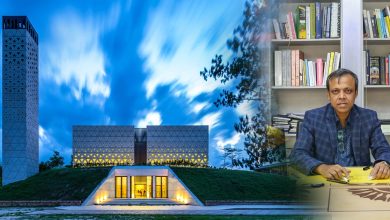As Bangladesh is a Muslim majority nation, the number of mosques scattered across the land is admittedly quite high. While most of these mosques share similar design features, some were made to stand out among the rest. Many of us have heard of a few historical mosques (for example, the Sixty Dome Mosque), yet there are much more recent creations that tend to escape our notice. The Rural Lantern or Mohor Para is one of these beautiful structures.
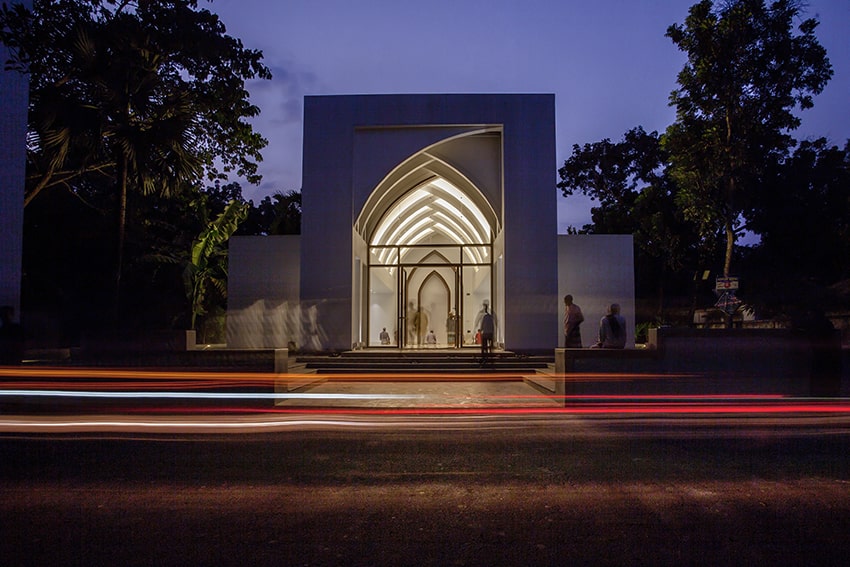
As the name suggests, The Rural Lantern is indeed situated in the heart of a village named Mohor Para, Narshingdi district. The serene white mosque, encompassing 477 square metres of land was constructed from the year 2012 to 2014.
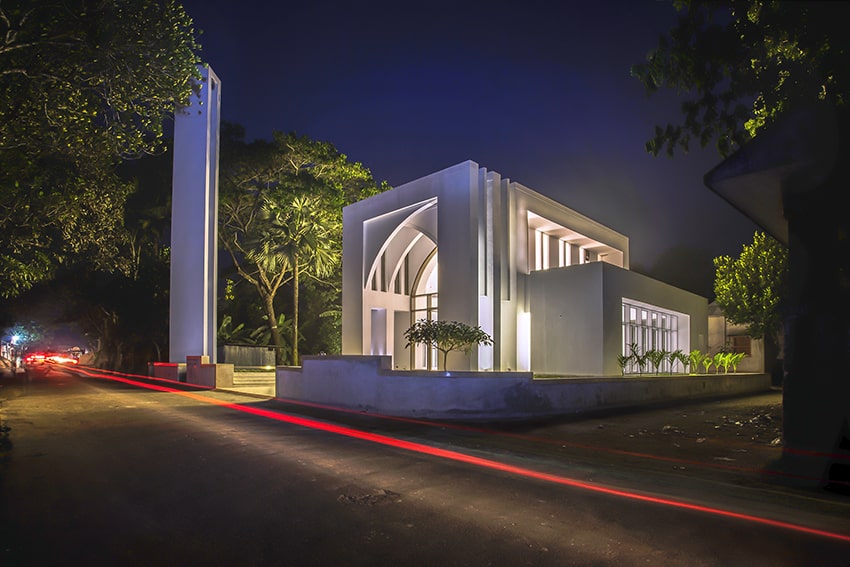
A K M Tanvir Hassan Niru, NahidAkram, and Manifa Rehnuma of thearchitectural & landscape consultancy firm ‘And ORDEN’ contributed to bring the mosque into existence. Due to the location, it is also referred to as the Mohor Para Mosque.
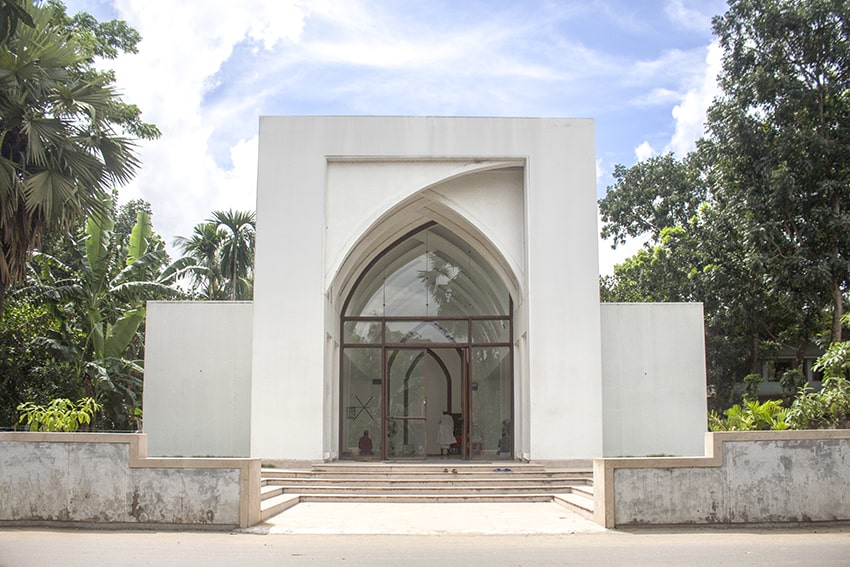
The Rural Lantern does not reveal its beauty all at once. At a glance, one might notice the soothing white walls, the suggestion of a dome in the arches, or the simple straight minaret. The longer it is beholden; each element of design merges seamlessly to provide a work of art. The design takes hints from Pre-Mughal and Mughal era mosques and presents the whole idea in a modern package.
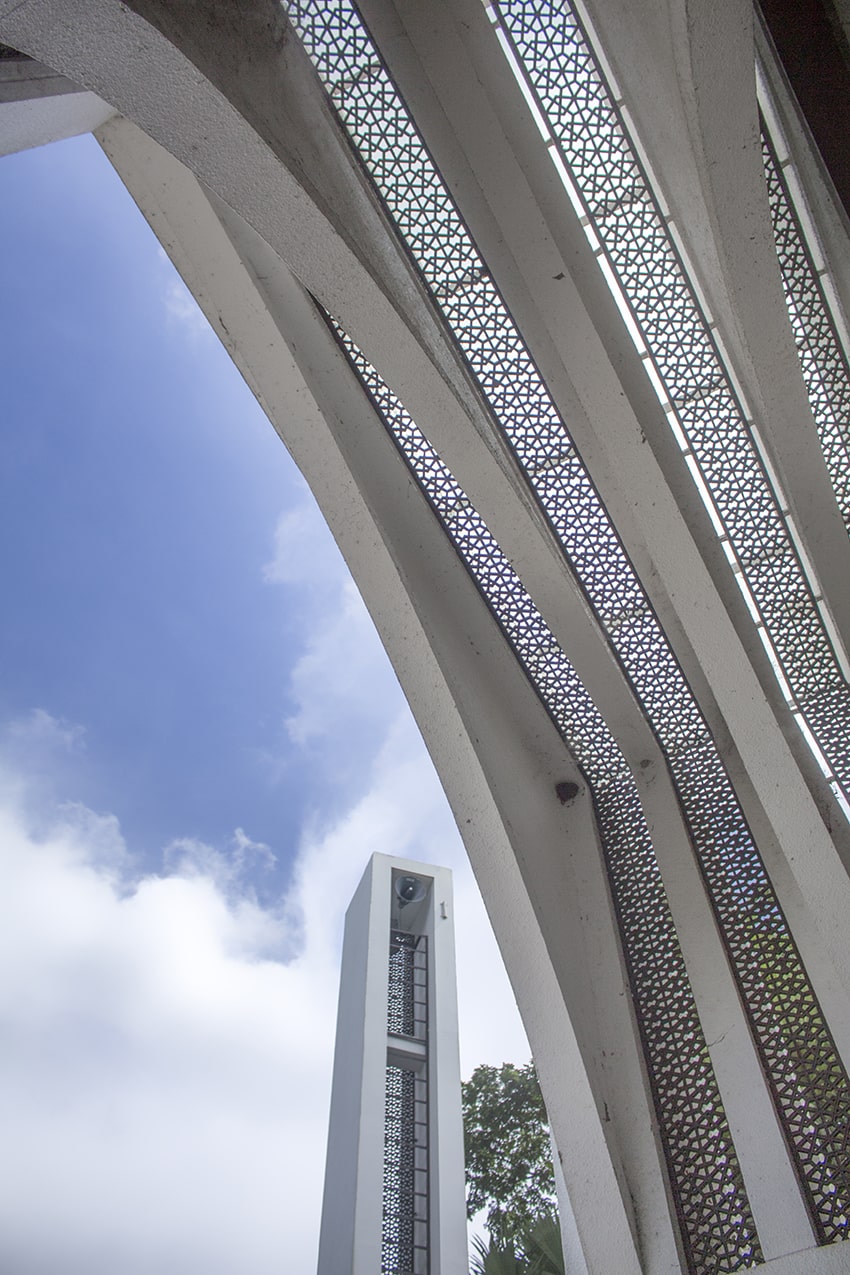
One might wonder, why pick the name ‘rural lantern’ for a mosque? The answer only reveals itself after nightfall, when the presence of a lantern becomes a must. In broad daylight, it is a stunning white sanctuary that doesn’t detract from the scenic surroundings. However, after sunset it becomes an ethereal source of illumination for the pedestrians and perhaps more importantly, the mosque users.
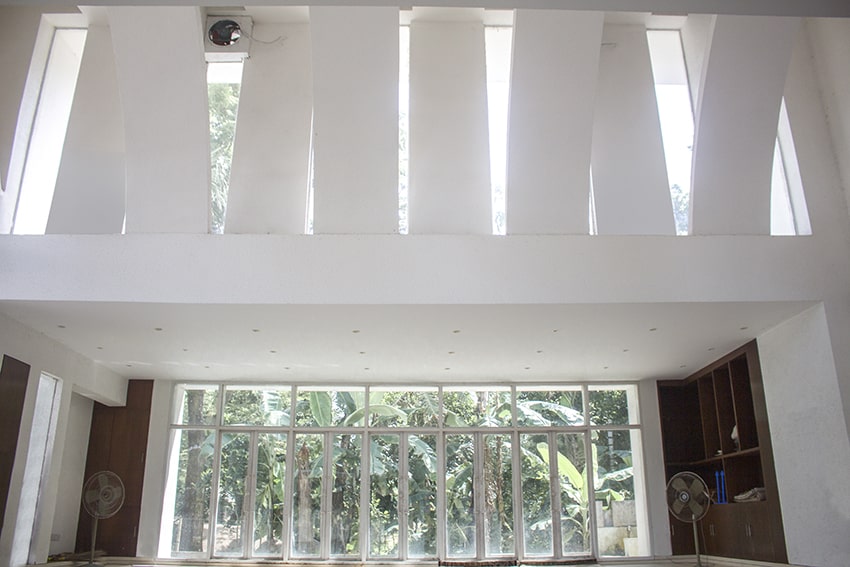
Perhaps the first feature that steals ones notice is the cleverly arranged set of half arches that create an illusion instantly. The arches are separated by lattices, allowing a mesmerizing play of light and shadow during the day, and act as outlets of light in the night, much like a lantern.
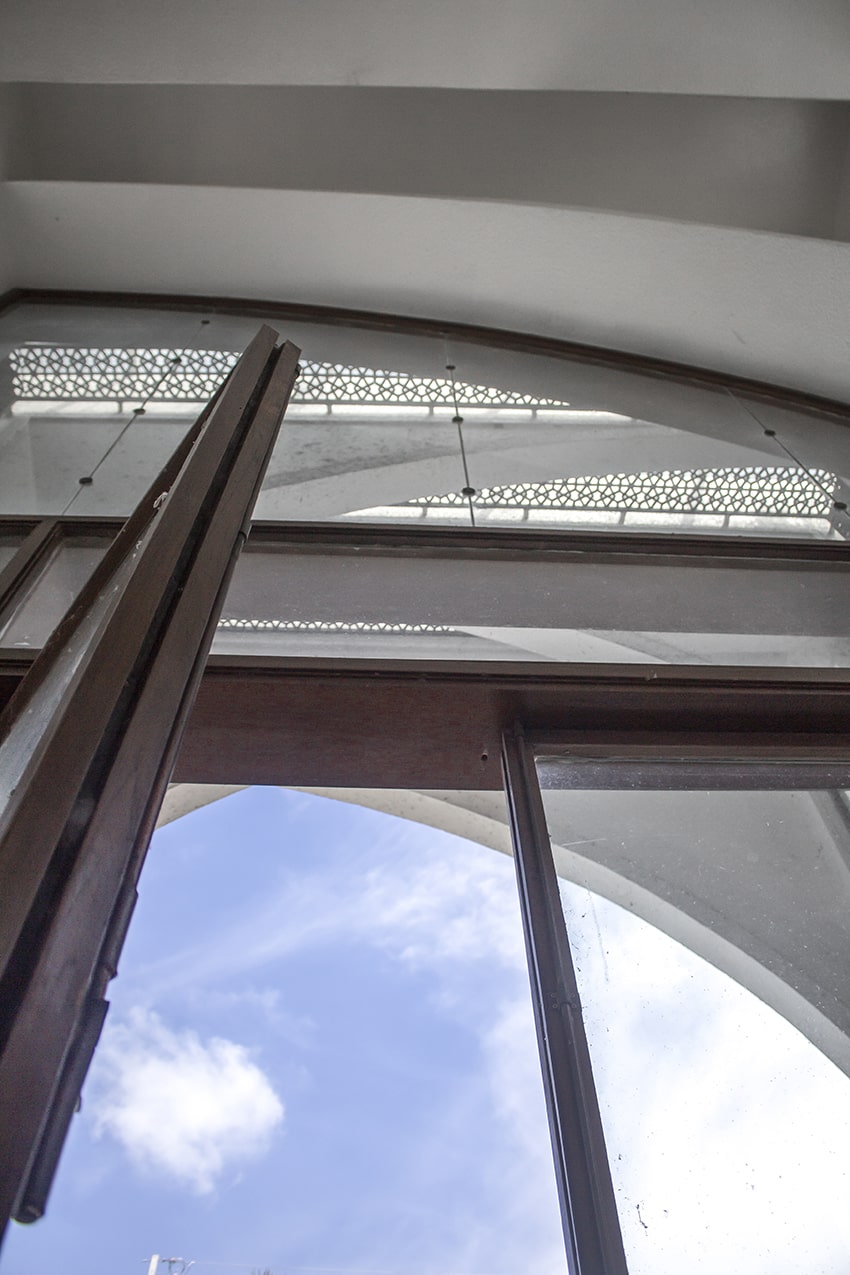
Past this point, the interior of the mosque speaks of transparency and clarity, to give a pious worshipper the perfect atmosphere for his prayer. The processional arches lead directly towards the minimalistic Mihrab wall, no other structures occluding the way, helping to focus the mind. The same lattice design that is seen gracing the arches also adorns the minaret from bottom to top.
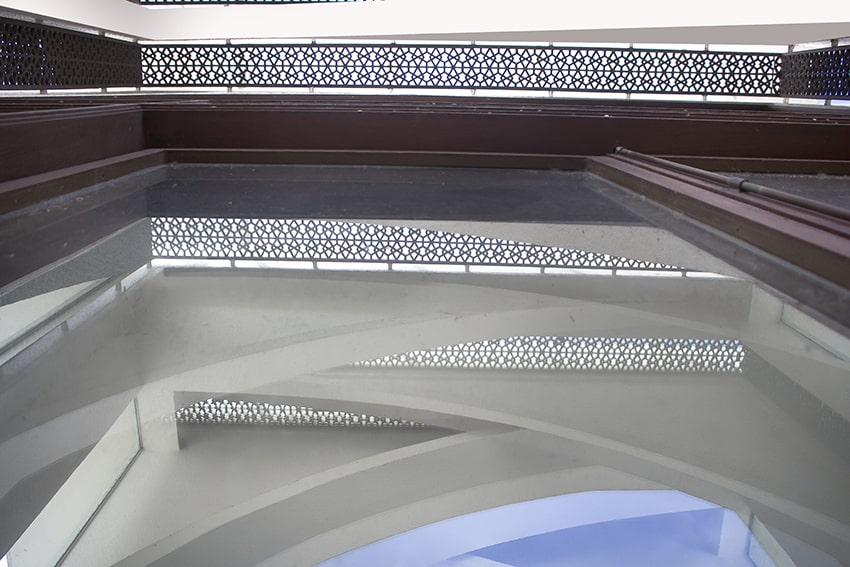
Moving away from the usual modern practice of closing off a space, artificially illuminating and air conditioning it, The Rural Lantern embraces nature wholeheartedly. The structure is planned in a way that encourages air circulation. Mechanical exhaust fans adjacent to the ceiling works to flush out the rising hot air. Daylight pours in from all directions through the latticed walls, transparent glass windows and entryway. Similarly, at night, the interior lights spill out into the darkness, reflected outwards in all directions.
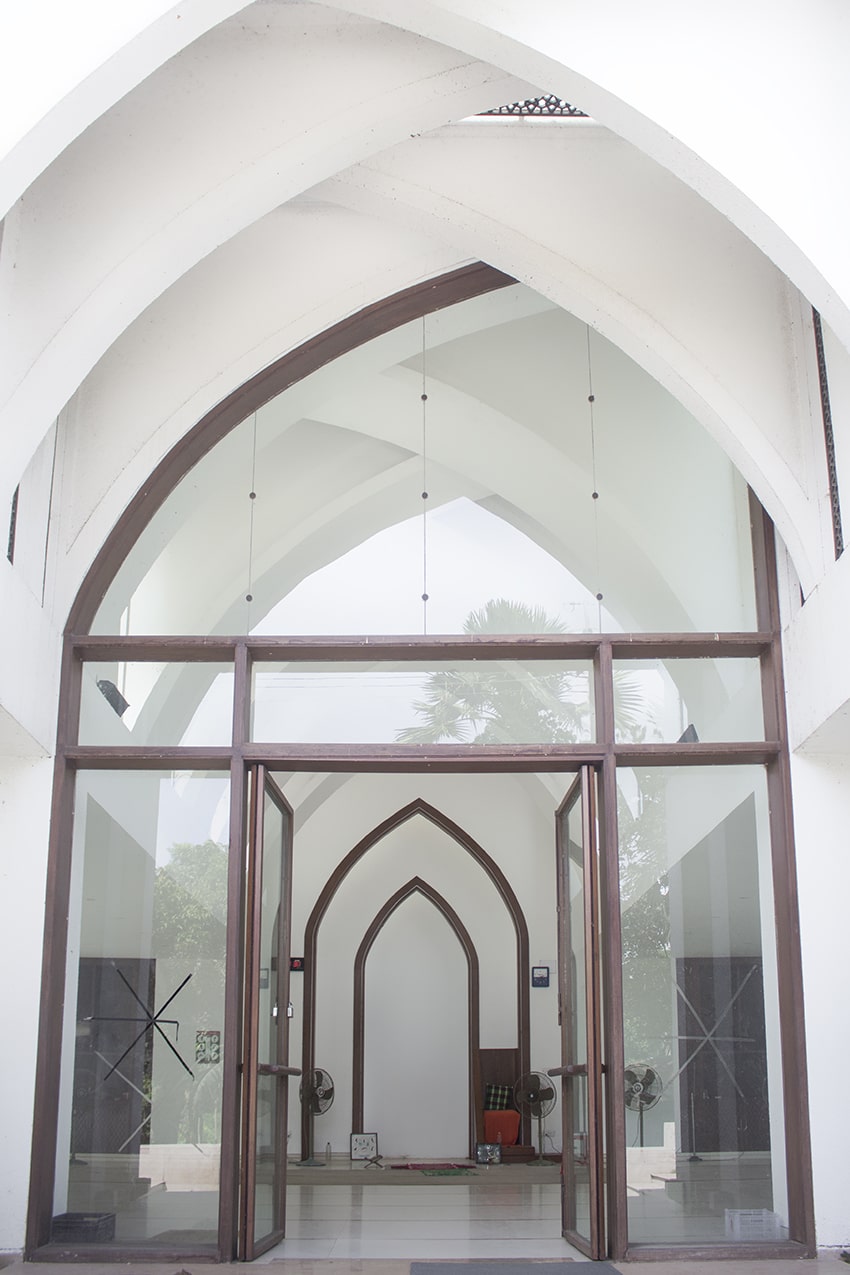
The landscape area surrounding the mosque is paved with hollow permeable pavers that encourage plant growth as well as facilitate water drainage through the soil. As the district of Narshingdi is prone to flooding, this feature proves to be quite practical. Native trees such as Chhatim and Betel nuts trees planted around the premises only add to the appeal and biodiversity.
Not only a mosque, The Rural Lantern offers a comfortable congregation space for the locals and has become their chosen place to gather at leisure. The low boundary walls easily provide sitting space for many. In the future, the mosque is also expected to sport additional structures, acting as library, research centre, gallery and Maktab for elders.
The Mohor Para Mosque has also become a gathering place for the Travelling Tablighs during the regional Tablighi congregation period. Every Friday, the Khutba (Islamic Preaching) is performed by an Imam from Dhaka, which attracts many of the locals into attending the Jummah prayer.
While the mosque is practical and aesthetically pleasing, it seems to have influenced the morals of local people as well. Perhaps subliminally, the whiteness of the structure has instilled an awareness of hygiene and cleanliness among the people. They tend to be generally respectful and mindful to keep the mosque clean. In both literal and figurative way, the Rural Lantern has indeed succeeded as a source of illumination for the people in Mohor Para.



